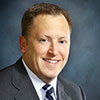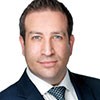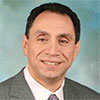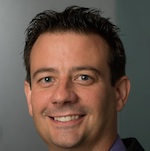Latest News
Interactive Data has launched a Liquidity Indicators Service, leveraging the same fixed-income evaluated pricing and reference data content that supports pricing and trading functions at buy-side and sell-side firms, to provide a series of security- and portfolio-level Liquidity Indicators.
Concern about market participants' ability to manage liquidity risk is being stoked by a combination of factors, including: a multi-year decline in dealer inventories; a sharp increase in the supply of outstanding debt instruments, with no comparable increase in trading volume; and anticipation that future interest rate increases could trigger a flight from fixed income assets. Regulatory responses include, most recently,
- 30/09/2015
Lifeline Capital Management, a fixed income alternative asset manager which purchases and manages portfolios of life settlements, has appointed William Ketterer (pictured) as chief investment officer CIO.
Ketterer, an expert in mortality and longevity risk and its impact on life settlement portfolio value, will oversee Lifeline Capital Management’s life settlement portfolios and work closely with provider company The Lifeline Program.
Most recently, Ketterer was the co-head of longevity products at Clarion Capital. Previously, he spent 10 years at KBC Financial Products in the insurance derivatives group, where he focused on policy and portfolio modelling and management of the firm’s
- 30/09/2015
In December 2014, the US Court of Appeals for the Second Circuit handed down a landmark insider trading decision in United States v. Newman. This decision seemingly curbed the Government's ability to prosecute insider trading cases by increasing the Government's burden of proof.
This April, the same three-judge panel that handed down the decision in December denied the Justice Department's request to reconsider the Court's decision.
The Second Circuit held that a "tippee" who was tipped inside information by an insider of a company could only be held criminally liable for insider trading if (i) the insider breached a fiduciary
- 30/09/2015
The recent swathe of regulation has meant that managers face an incredible drain on internal resources, leading to increased headcount, increased operating costs, and distraction from core competencies.
To overcome this, ConceptONE and Maples Fund Services, a division of MaplesFS, recommend a robust Regulatory Enterprise Risk Management (`RegERM') system to ease the burden on managers. This integrated approach builds efficiency into reporting workflows and populates myriad filings, from Annex IV to Form PF, CPO-PQR, EMIR, with accurate data. Drawing on their collective experience, the firms have co-authored a white paper entitled, "Achieving Regulatory Alpha through Regulatory Enterprise Risk Management", where
- 30/09/2015
- 30/09/2015
For US-based hedge fund managers that already have a presence in Europe – and are confident they can meet the AIFMD's substance and reporting requirements – it makes sense to apply for AIFM authorisation. But what about US managers with European investors but no European presence? Or US managers with no current European investors, but the desire to expand into Europe in the future? Maitland can assist.
Maitland is a relatively new brand name in the United States market, having acquired Admiral Administration in 2012. Following its full integration into the Maitland group, Admiral has now rebranded to "Maitland".
Maitland
- 30/09/2015
- 30/09/2015
When AIFMD was introduced into European law two years ago, it set a new benchmark globally for fund governance. This shut out the majority of US hedge funds from marketing to a significant number of European investors.
"US hedge funds have woken up and realised that there are actually some practical solutions that exist within the market to help managers to access European capital. Working with third party AIFM/UCITS ManCos, setting up their strategies on platforms or simply getting support to privately place funds under Private Placement," says Daniel Maycock (pictured) of Lawson Conner, a market leader in investment management solutions
- 30/09/2015
The US has seen a real resurgence in activism over the last couple of years. Last year, for example, there were 247 activist campaigns; the highest number since 2008 when 284 were recorded according to FactSet data.
Over the last 10 years, assets in activist hedge funds have grown six-fold to an estimated USD120 billion according to a report by AIMA, written in conjunction with law firm Simmons & Simmons. And investor interest continues to build.
This is being helped, in part, by the strong performance of this sub-set of the hedge fund universe. According to Hedge Fund Research, the
- 30/09/2015
There are some early signs that the effects of Basel 3 are changing the way that hedge funds do business with their prime brokers. In today's new reality, primes are becoming more prescriptive over how the bank's balance sheet is being utilised to support clients' trades. To mitigate the costs of trading physical securities, some managers are beginning to use more synthetic instruments.
"We are starting to hear from our clients that their prime brokers are steering them towards certain instruments that are more beneficial from a capital perspective," says Nick Tsafos (pictured), Audit Partner at EisnerAmper LLP, one of
- 30/09/2015
2015 has been a big year for Concept Capital Markets, LLC. Earlier this year, the firm entered into an agreement to be acquired by Cowen Group, a leading growth investment bank and alternative investment manager with a heritage dating back to 1918.
Through its acquisition of Concept Capital, Cowen will add a significant prime brokerage arm to its overall offering.
"Cowen is a notable name in the institutional equity research, sales, trading and investment banking business through its Cowen and Company brokerage, as well as in the alternative asset management space through its Ramius investment adviser," explains Jack Seibald (pictured),
- 30/09/2015
By Geoff Ruddick (pictured), IMS Fund Services – There has been an extraordinary focus on and trend towards `split boards' in the last few years. For most people the accepted definition of a `split board' is having independent directors from different fiduciary firms. It is considered by some to be the best way to construct a board. In reality this is an overly simplistic definition and assessment of how to recruit and construct an effective and diverse board.
So how did this readily accepted definition come to be? In some respects there is merit and in other respects it is
- 30/09/2015
Special Reports
FeatureD

- Intel
- April 29, 2024

- Intel
- April 26, 2024

- Intel
- April 25, 2024
- Intel
- April 24, 2024

- Intel
- April 23, 2024

- Intel
- April 22, 2024

- Intel
- April 19, 2024

- Intel
- April 18, 2024










